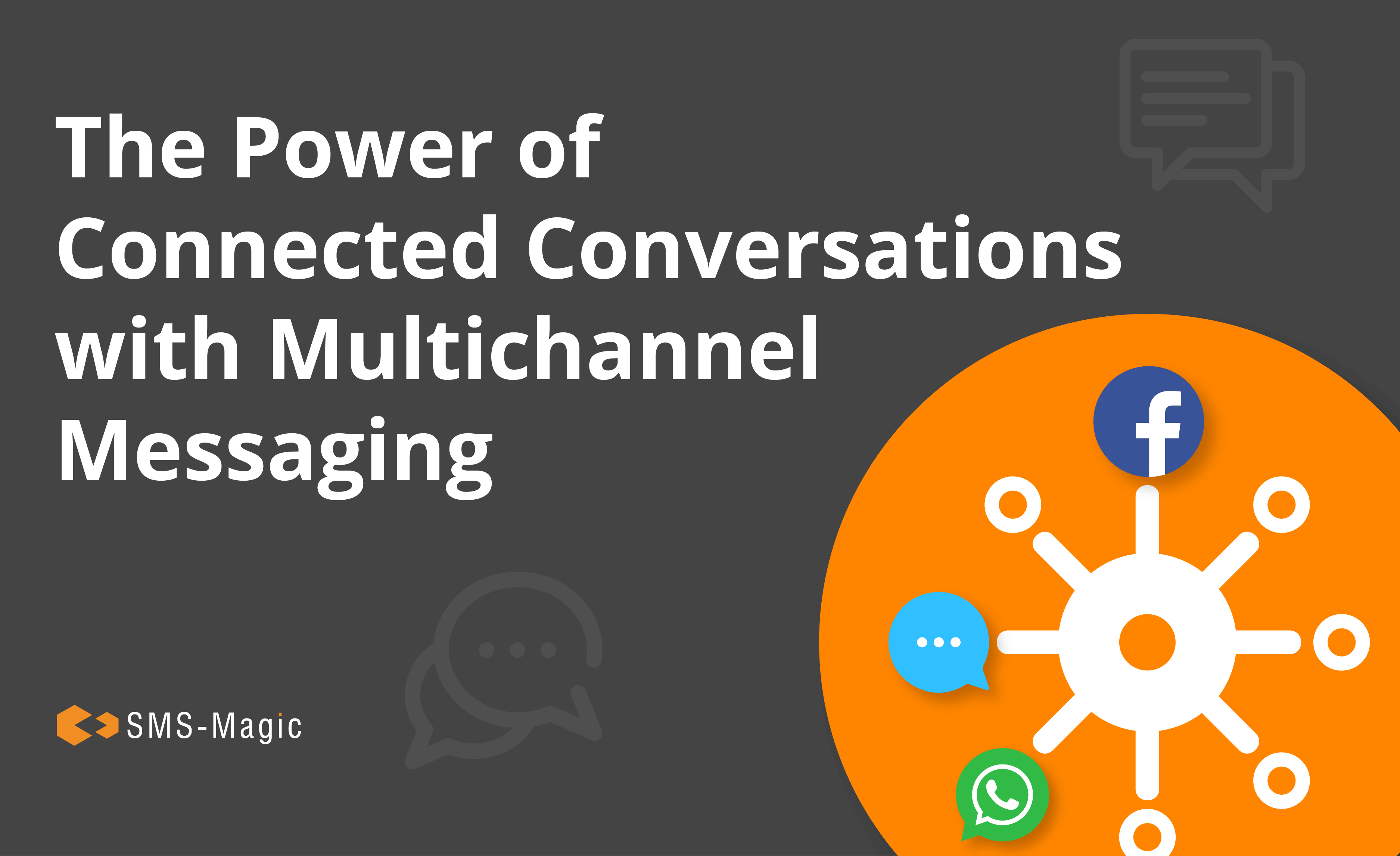
All it takes is 2 easy steps
If you're a winner, we will send you $100 Amazon gift card at Dreamforce!


It’s true that Covid-19 accelerated the adoption of digital communications across industries. Businesses that had not yet invested in digital tools scrambled to figure out how to engage with their customers in non-traditional ways. And it’s likely that many companies felt overwhelmed by the task. Luckily, there are simple ways to begin communicating with your audience across digital channels. Multichannel messaging is a powerful tool to use if you aren’t already.
Multichannel marketing used to mean marketing through magazines, television ads, and newspapers with store promotions, billboards, direct mail initiatives, and telemarketing. But in today’s digital world multichannel marketing efforts include channels such as podcasts, blogs, and videos which can be easily shared across various platforms, including messages, social media, emails, and websites.
The average adult uses more than four connected devices to access the internet today. It is necessary for companies to understand this fundamental aspect of the user experience and tailor their messaging strategies accordingly.
Multichannel messaging has a lot of benefits for both companies and customers. When a customer is exposed to a campaign across all channels, they are more likely to act and trust the company more.
Different people enjoy communicating via different channels. When a company takes the time to determine which channels are preferred by which customer personas, they can use this information to vastly improve the response rates of their campaigns.
Different types of messages work better through different channels. When it comes to communicating with customers over social media, it is important for companies to understand the different types of platforms and what content is best for each one. For example, when it comes to just photos, Instagram and Pinterest are better platforms to use and when it comes to social communications, Facebook is better.
The human brain can discard lots of information it is exposed to daily. It is easy for people to discard most marketing messages, so companies having the ability to multi-channel advertise allows them to ensure that customers are seeing their content on at least one platform. When it comes to companies repeating their message, using different channels is much more effective than using just one channel.
A good multi-channel messaging strategy is to use multiple channels in a way that allows them to complement and support each other. When companies use multiple channels to support a single campaign, the campaign generates better results.
Customers who see your consistency in messaging across multiple platforms are more loyal. You’re giving them more touchpoints and opportunities to engage them with information that is valuable to them.
These different channel options allow you to better target specific demographics and behaviors. Some personas are more receptive to communications via channels such as Facebook, WhatsApp, email, or text messages, while others may prefer print, television, or phone calls.
If you’re trying to sell a product, what could be better than having multiple ways to engage and convert a prospective customer? The more paths that lead to a sale, the better the odds of making a sale.
With proper management of their multi-channel strategy, business owners can find the right mix that will deliver the lowest CPA (Cost Per Acquisition), thus achieving a faster return on their investment.
Gaining insight into the buying habits and demographics of your customers can be extremely difficult and expensive, but the more channels you utilize in this system, the easier it is to gain this knowledge and understand their buyer’s journey.
No matter what communication platforms you choose, there will be challenges of multichannel marketing. Marketers can face a number of challenges in running multichannel marketing campaigns. Being aware of them can help you better prepare. Some of these challenges are:

Now that you know both the benefits and challenges of marketing via multiple channels, it is time to have a look at the strategies on how to create effective multichannel messaging campaigns. Here are 5 steps to get you started:
Start by asking yourself why you’re doing this. Here are some of the key questions that you should try to answer to help you begin with clearly defined goals:
With so many channels available, you can’t pursue all of them. Identify the best ones for your business and rank them according to your priority. Depending on the number of channels, you will have to allocate resources as well.
Here are some ways to help you decide which channels to be present in:
Once you understand the importance of multichannel marketing, you will soon realize that relevant conversations are what you need to leverage multichannel marketing. To be able to create these conversations, you will need to ask yourself:
Multichannel marketing becomes much easier when you have a great marketing automation tool. Such tools not only help you reduce your time and efforts but also to collect feedback. These tools will also help you with multichannel marketing attribution which is essential for understanding what goes behind assigning values to touchpoints across the customer journey.
As you use hybrid channels and multichannel marketing, you will need to adapt to the current marketing trends.
To be successful with multichannel growth, the key is to try to think about and plan for all the challenges you might face as you scale your business and operations. If you can be proactive about putting strategies in place, you’re much more likely to build a sustainable, profitable business in the months and years ahead.
Want to see how SMS-Magic Converse helps clients achieve all of this with text messaging? Reach out and we would be happy to give you a personal tour and share examples from our clients!
Stay updated on business text messaging
Text MAGIC for Demo to
USA: 36343
AUS: (61)409564682
UK & ROW: +44 7860017509
Email: care@sms-magic.com